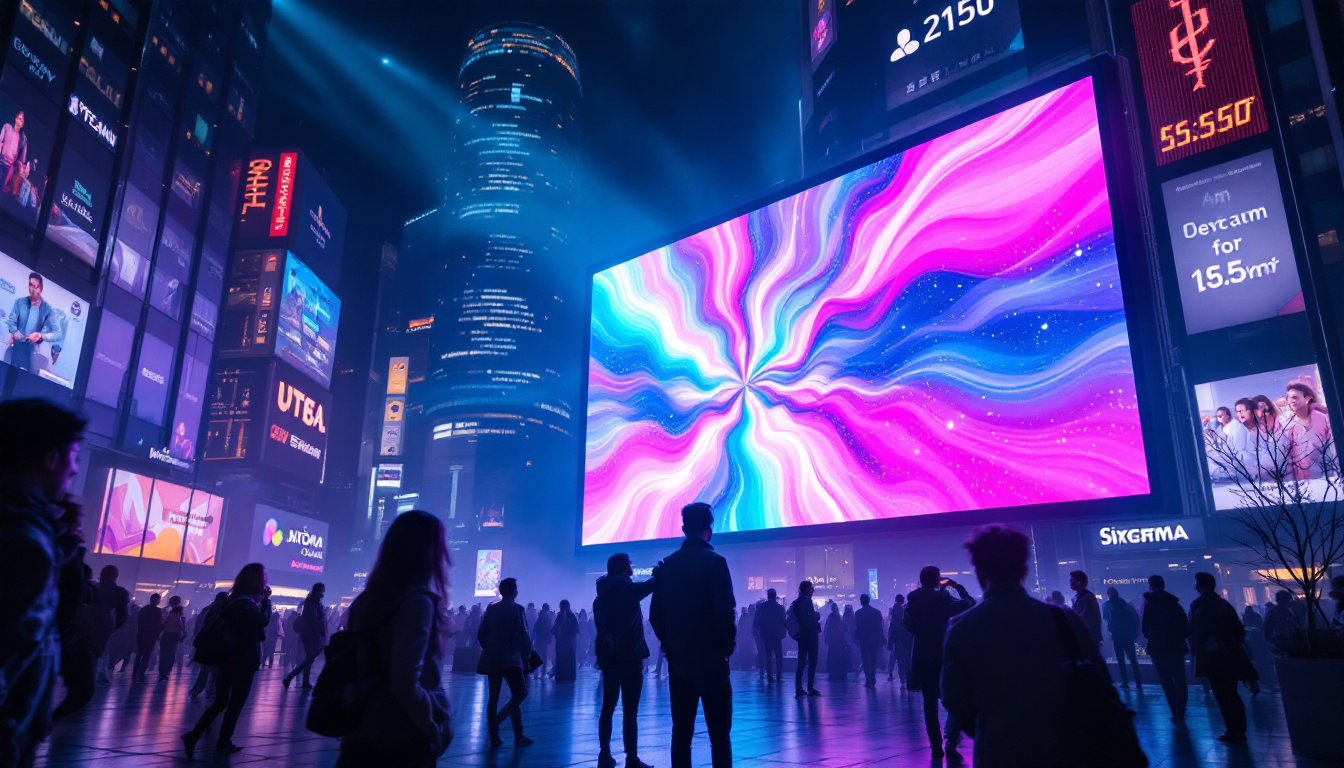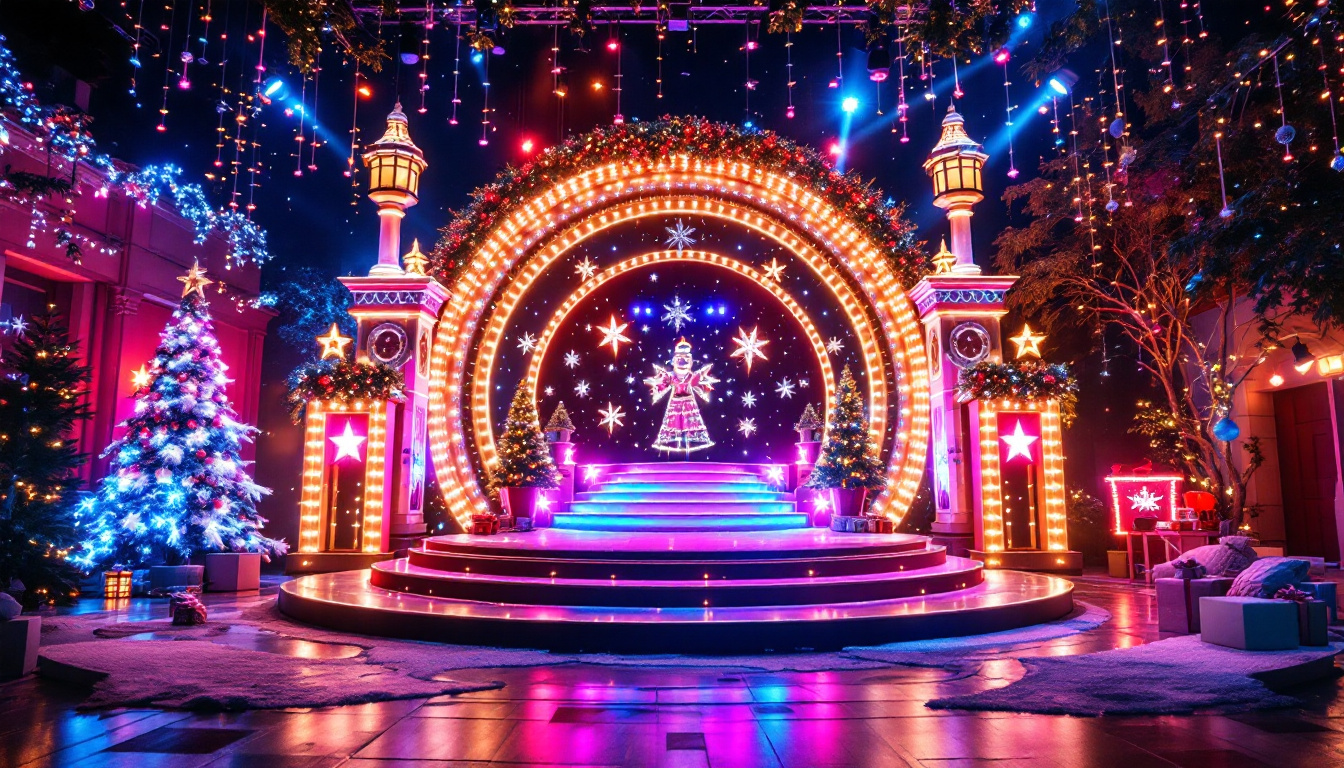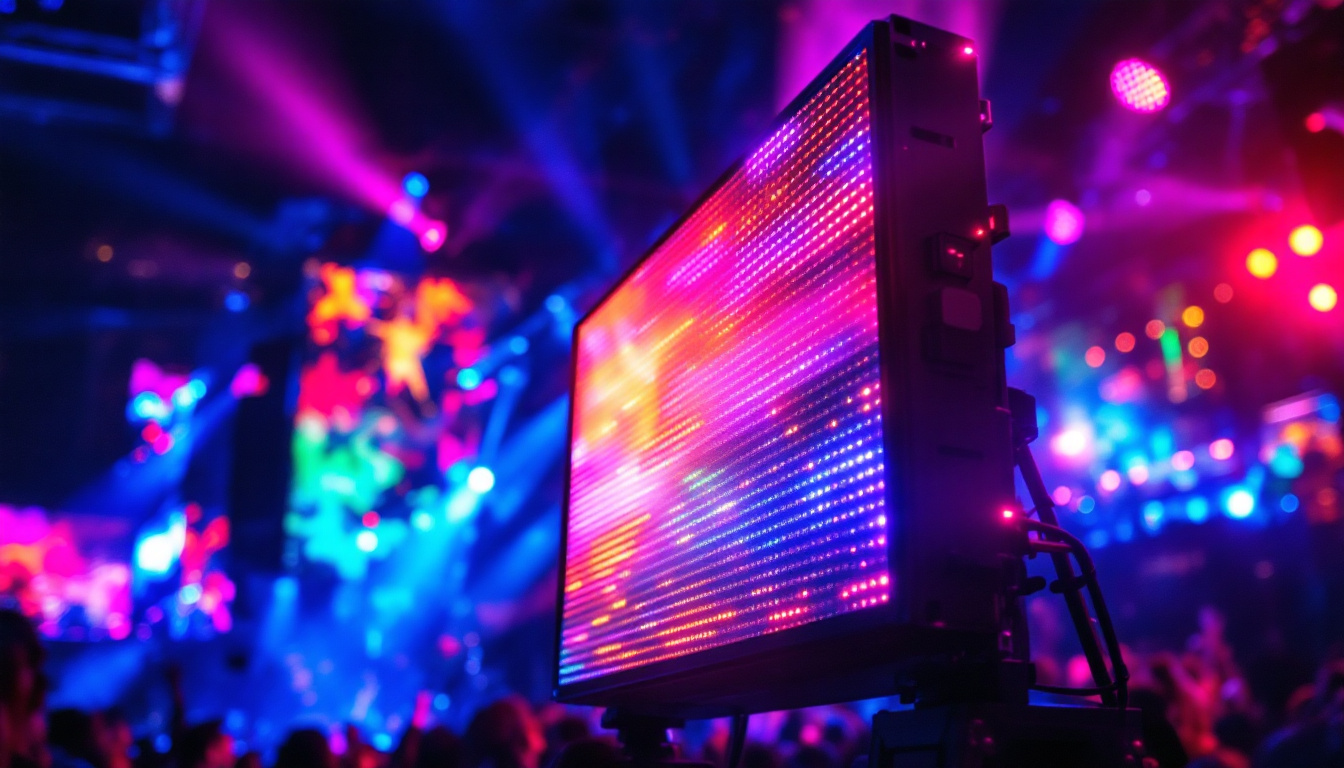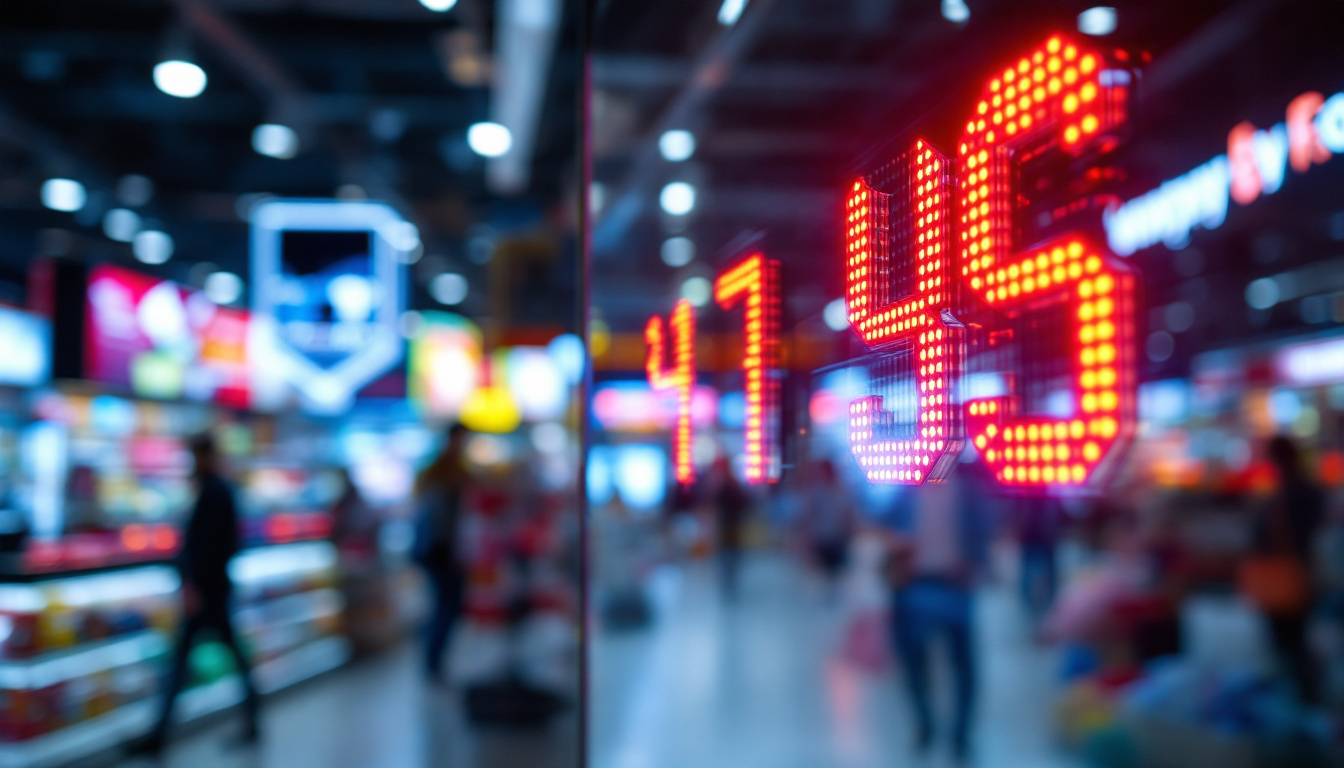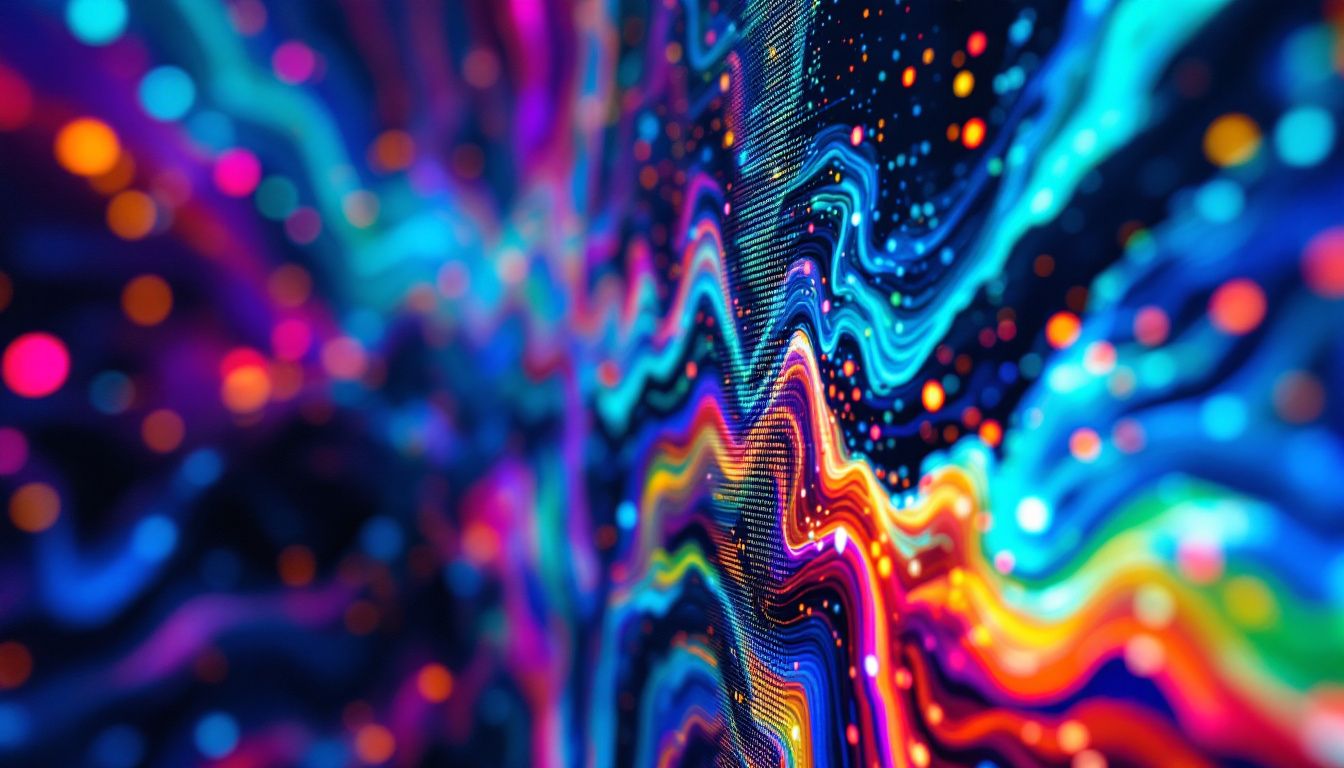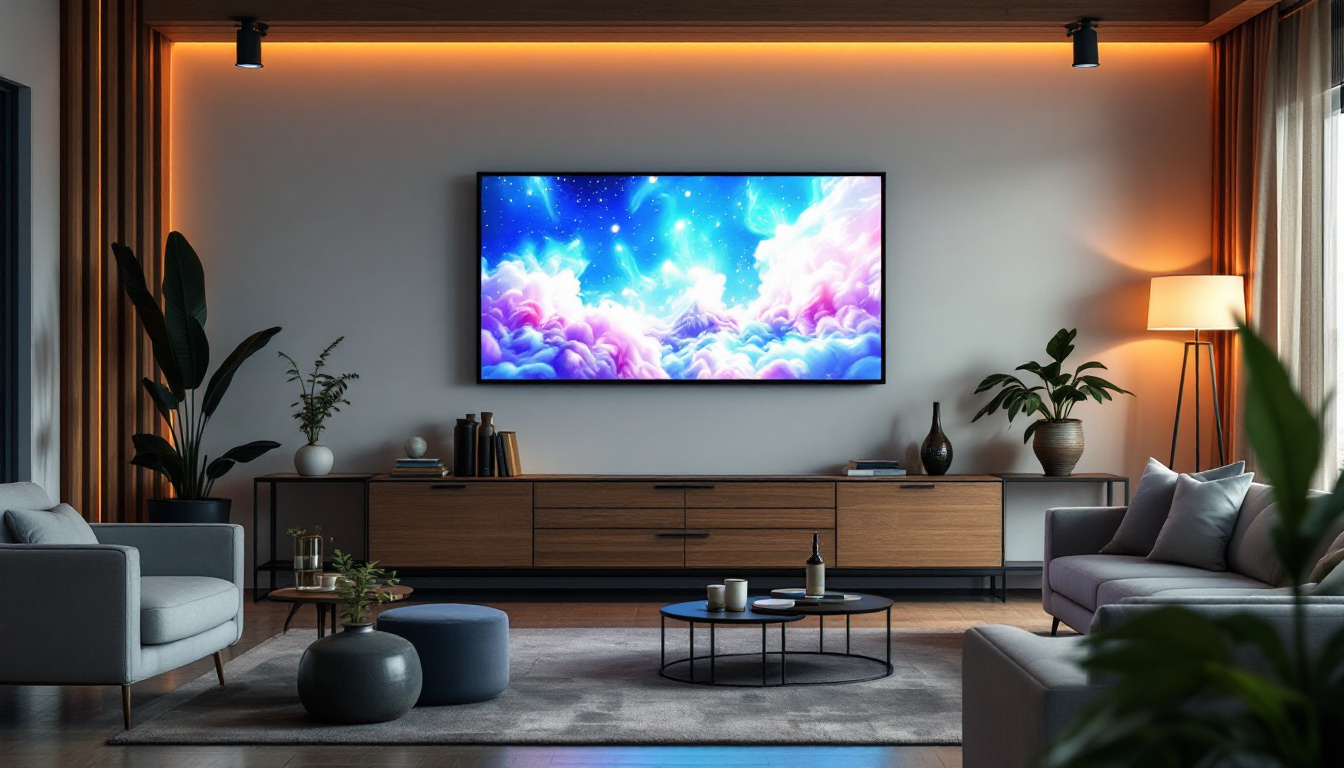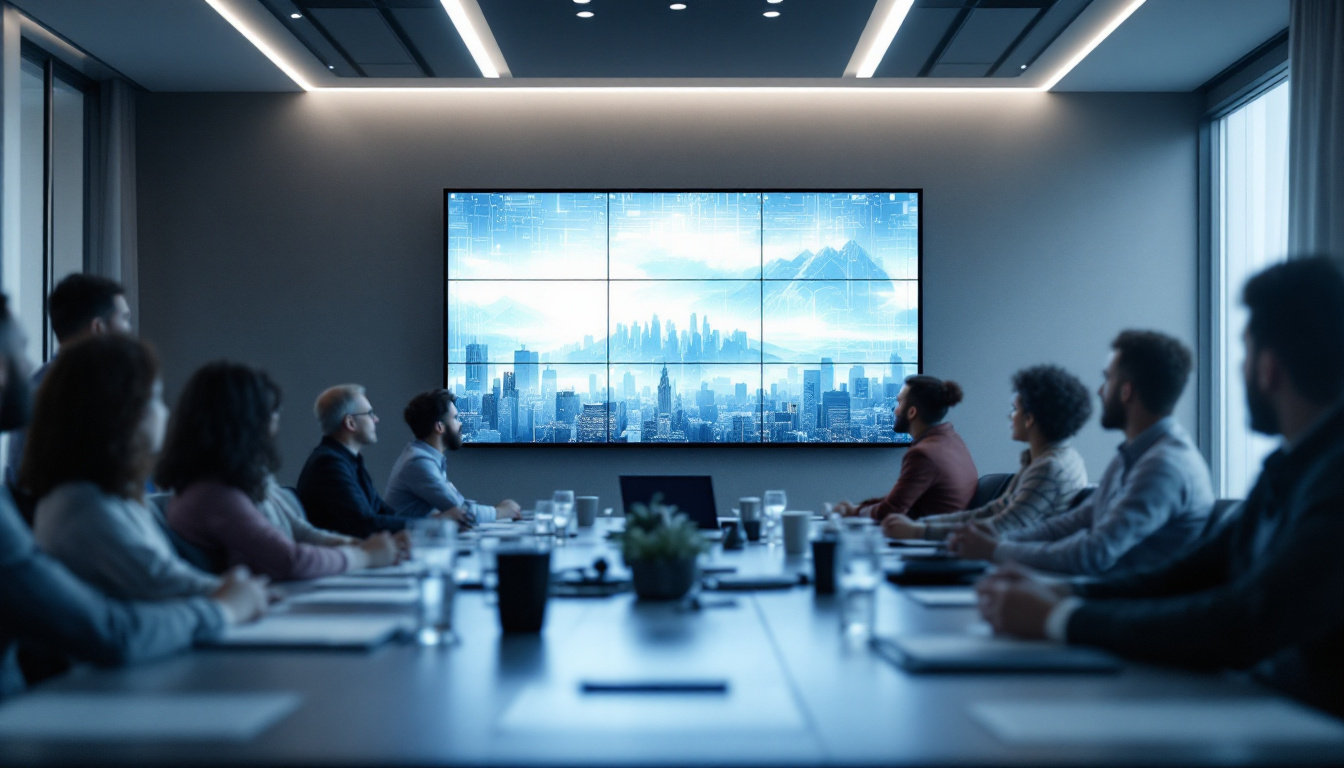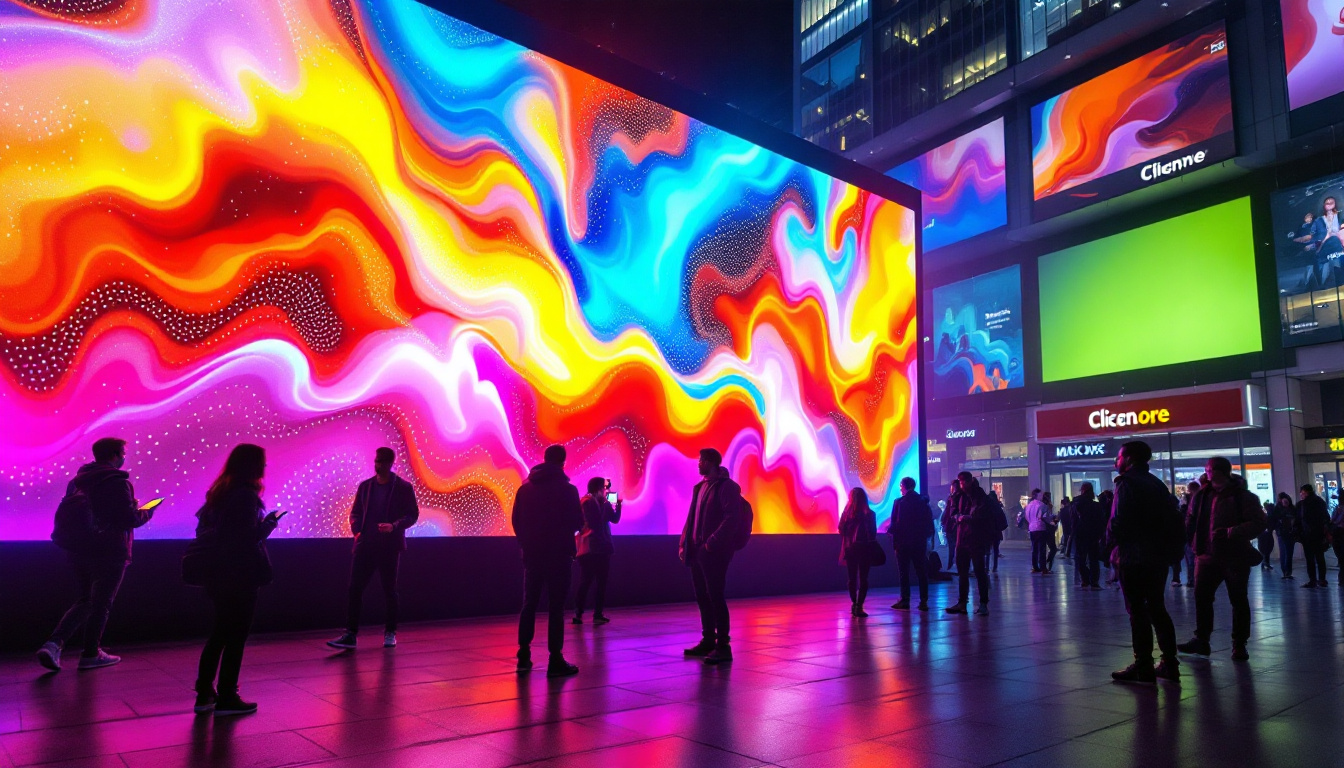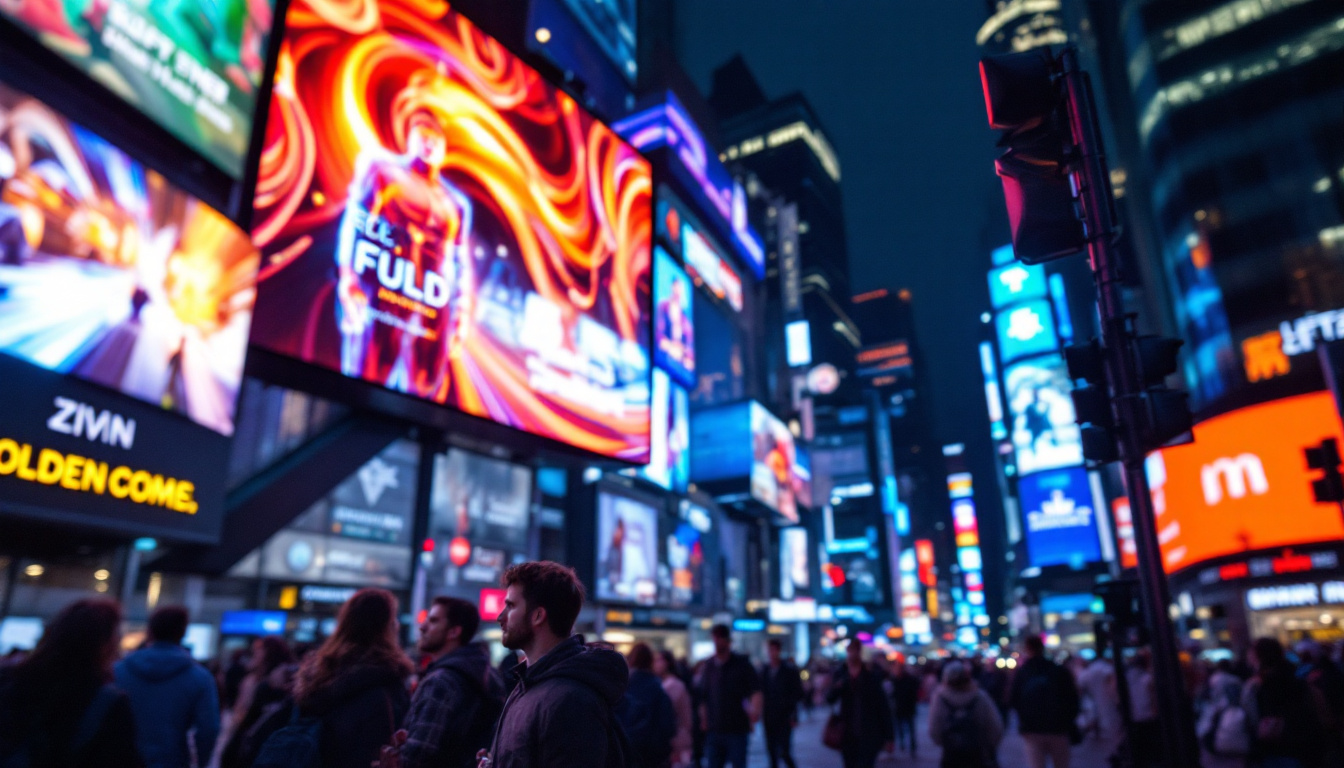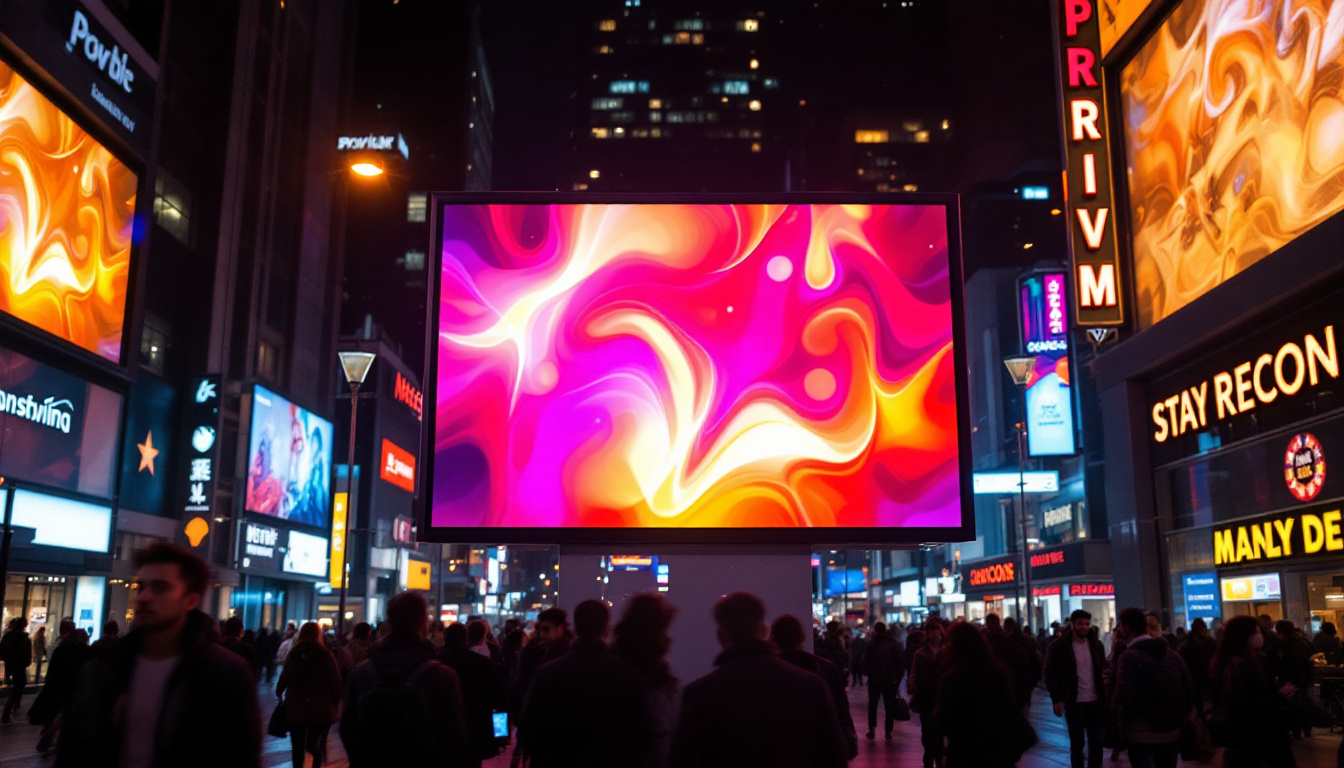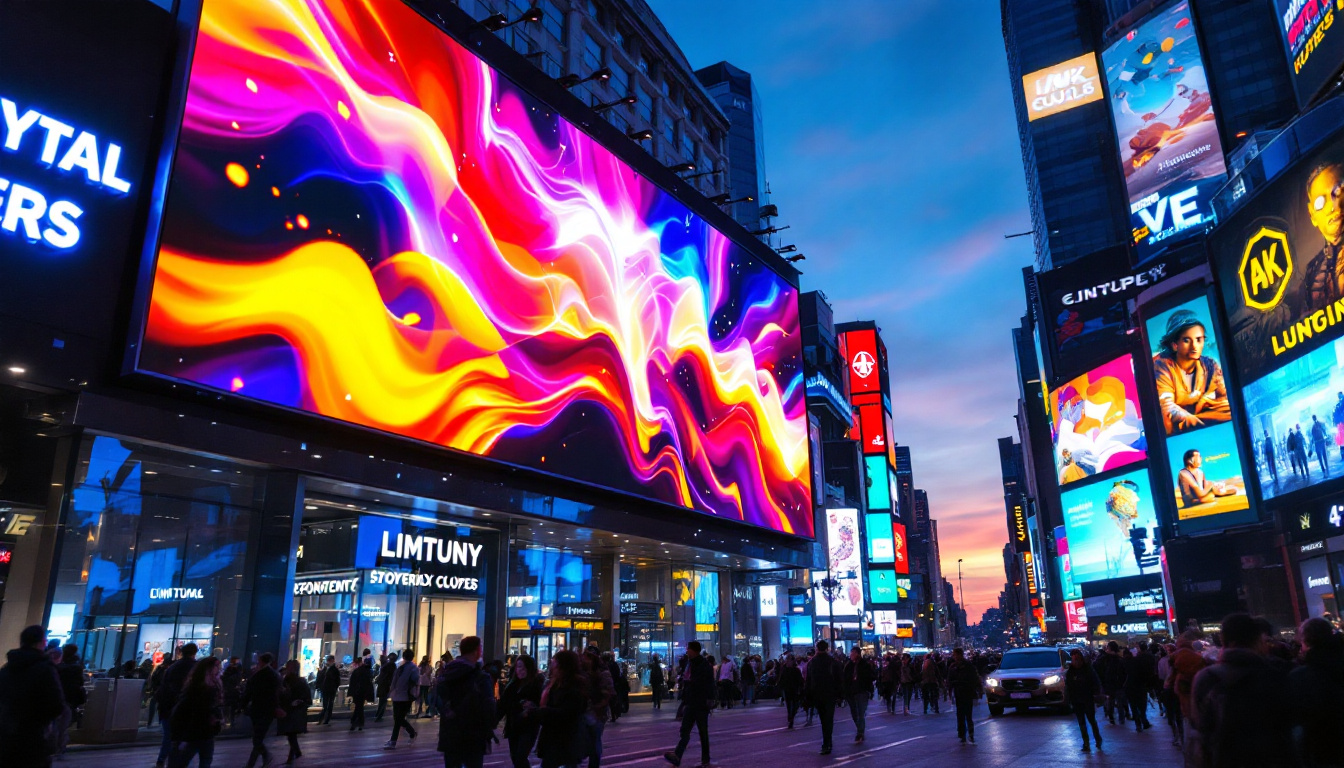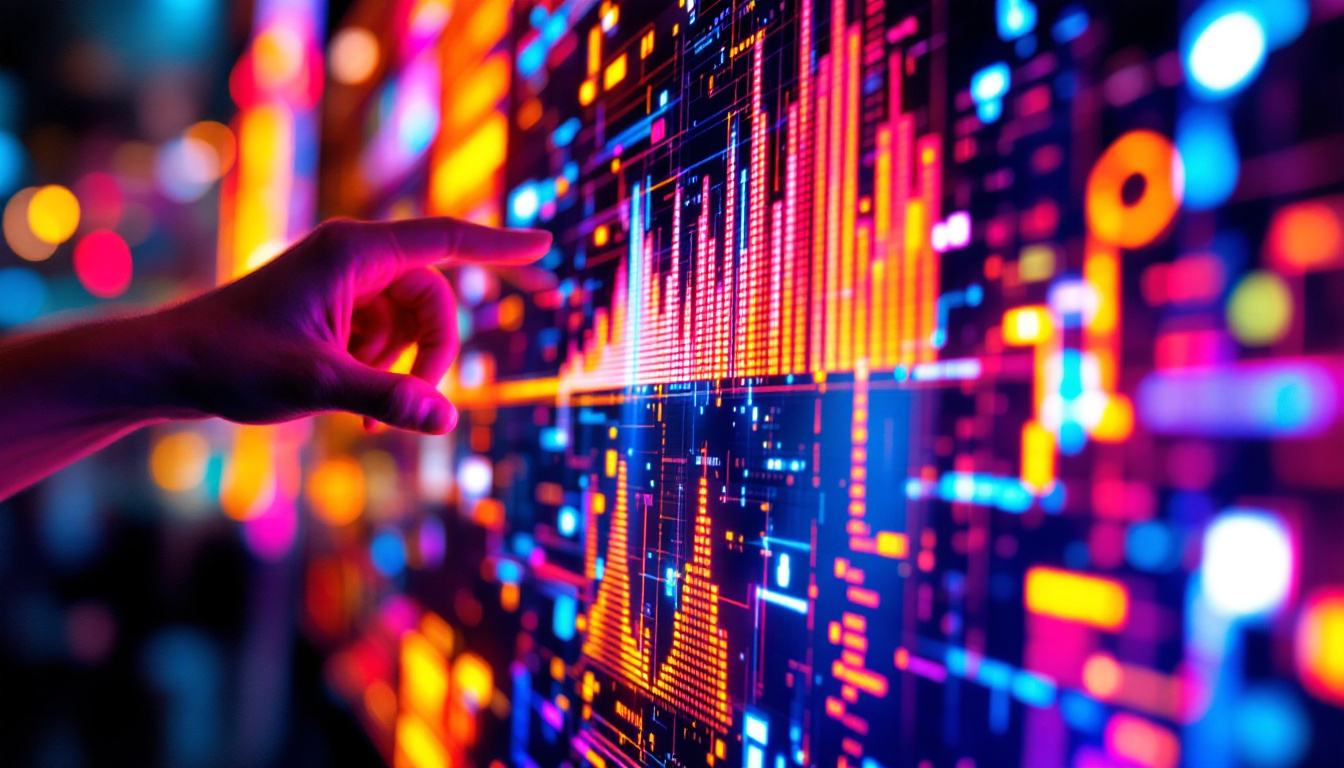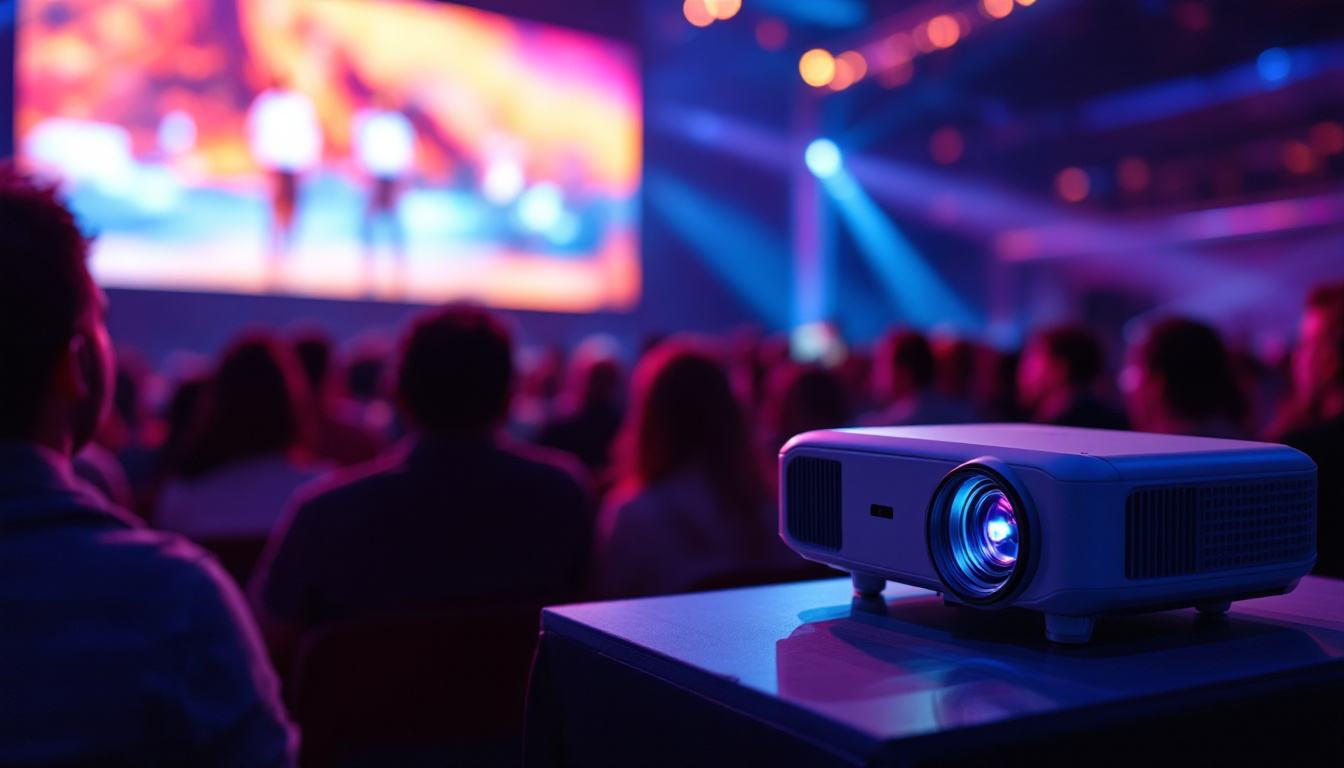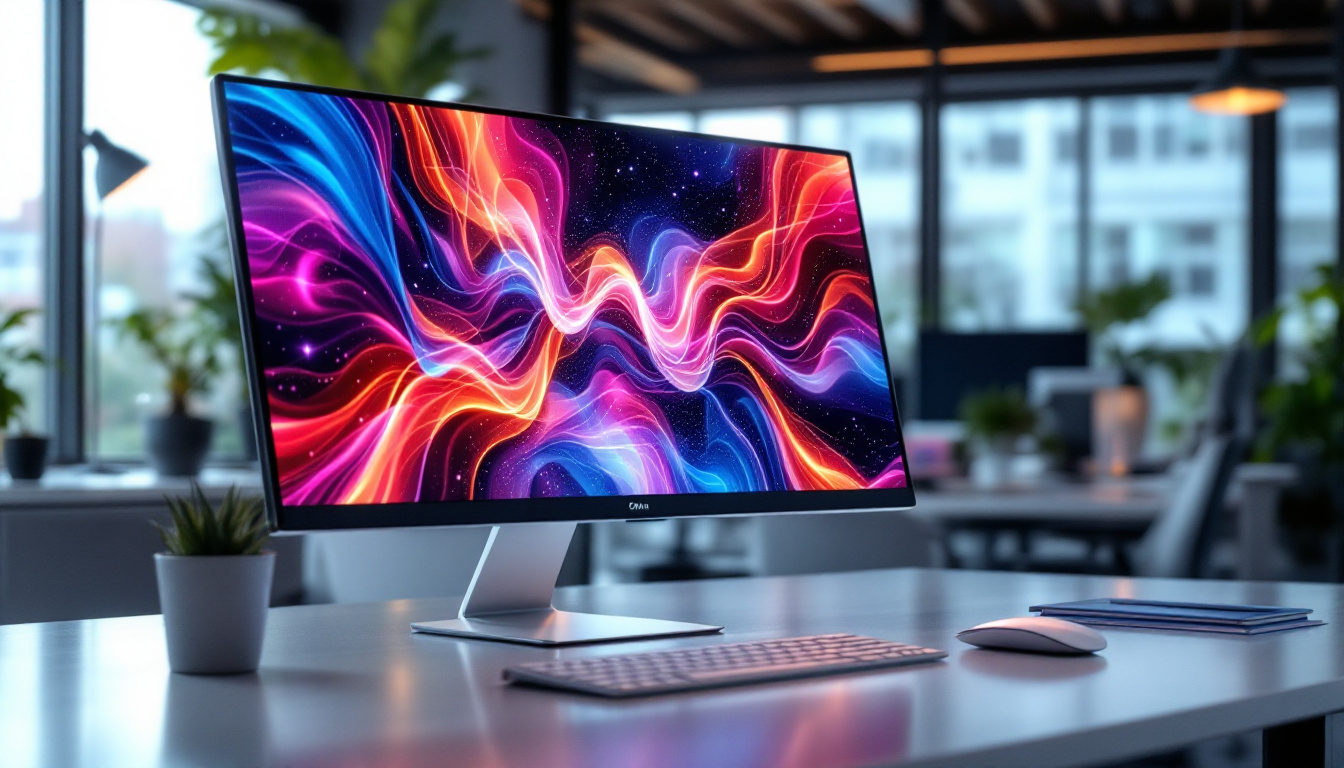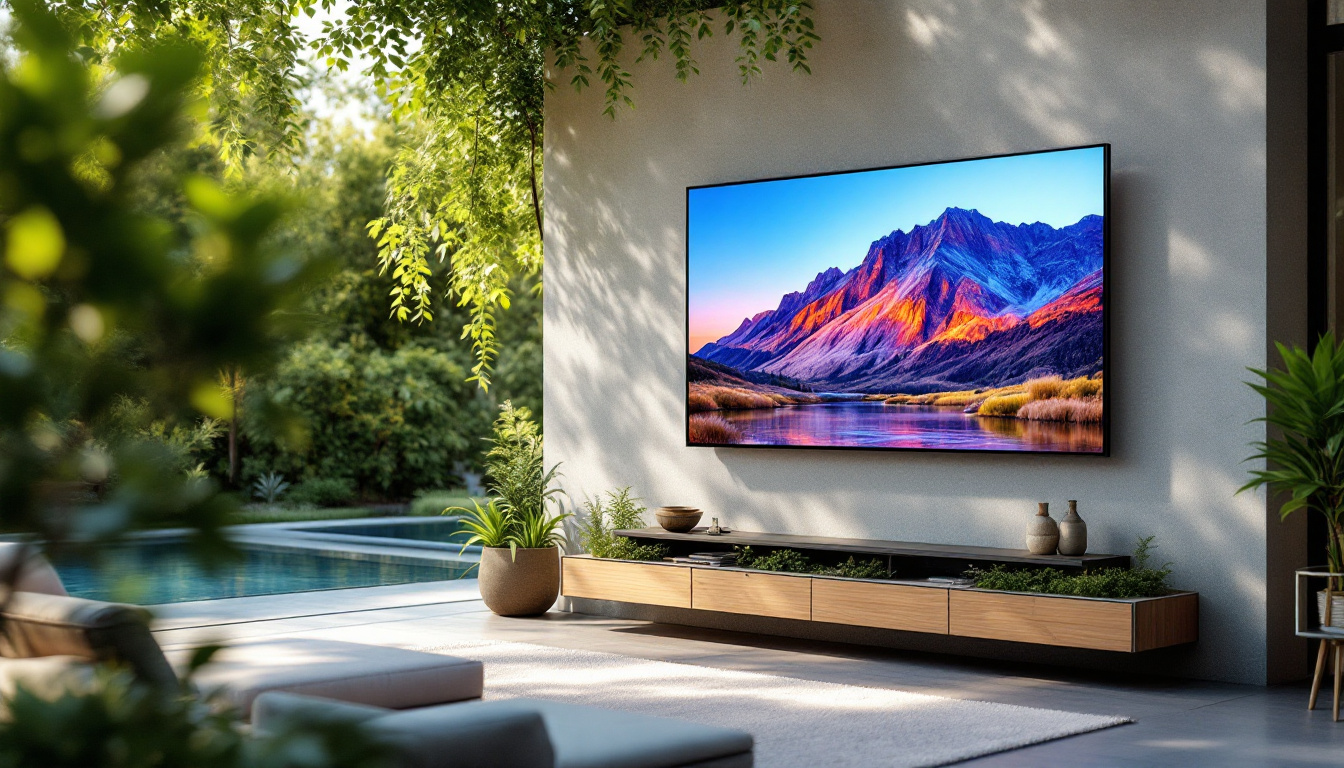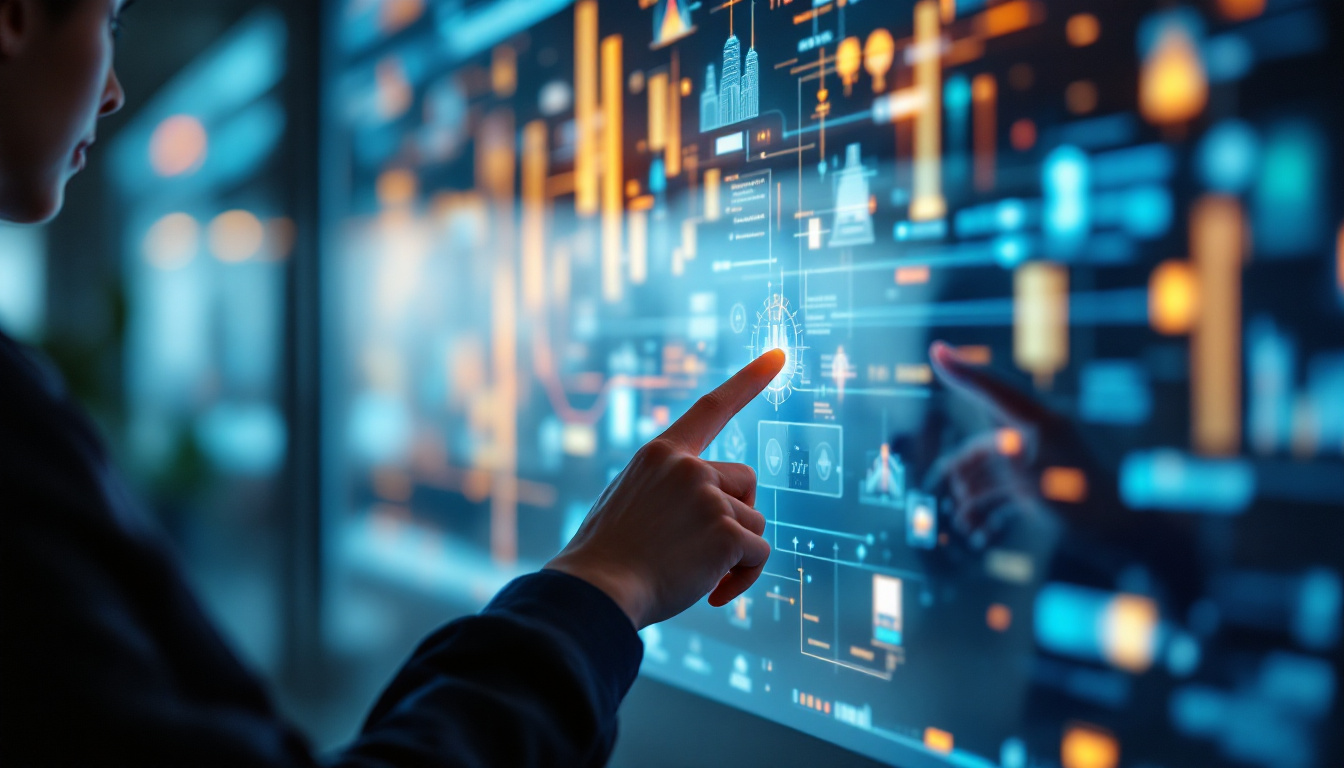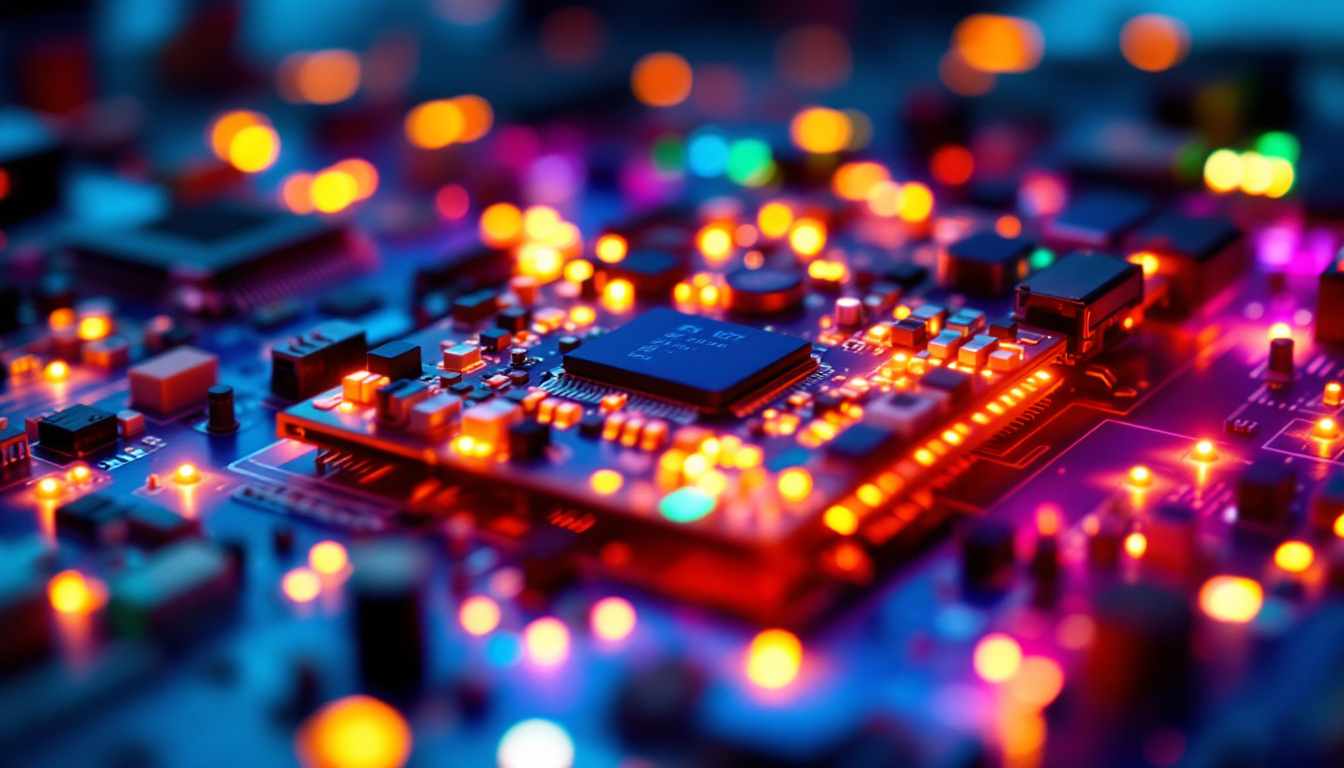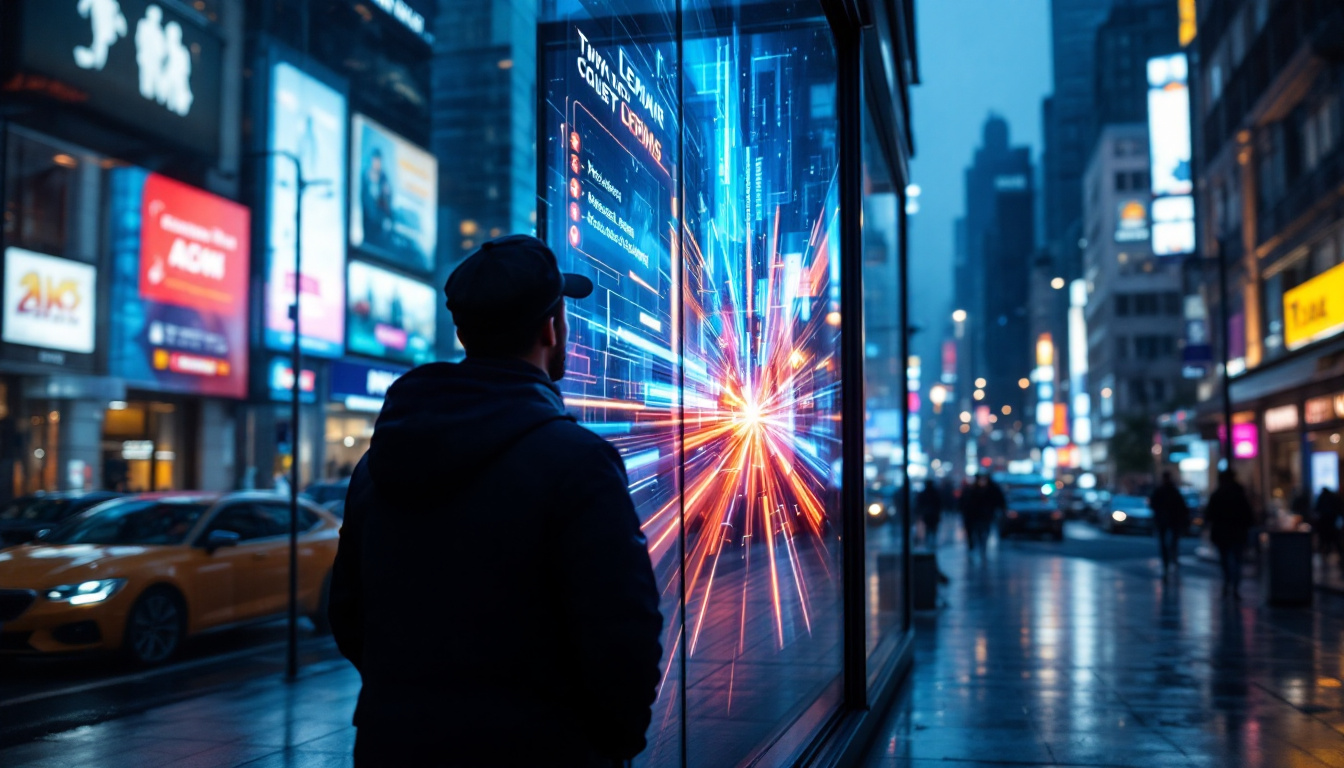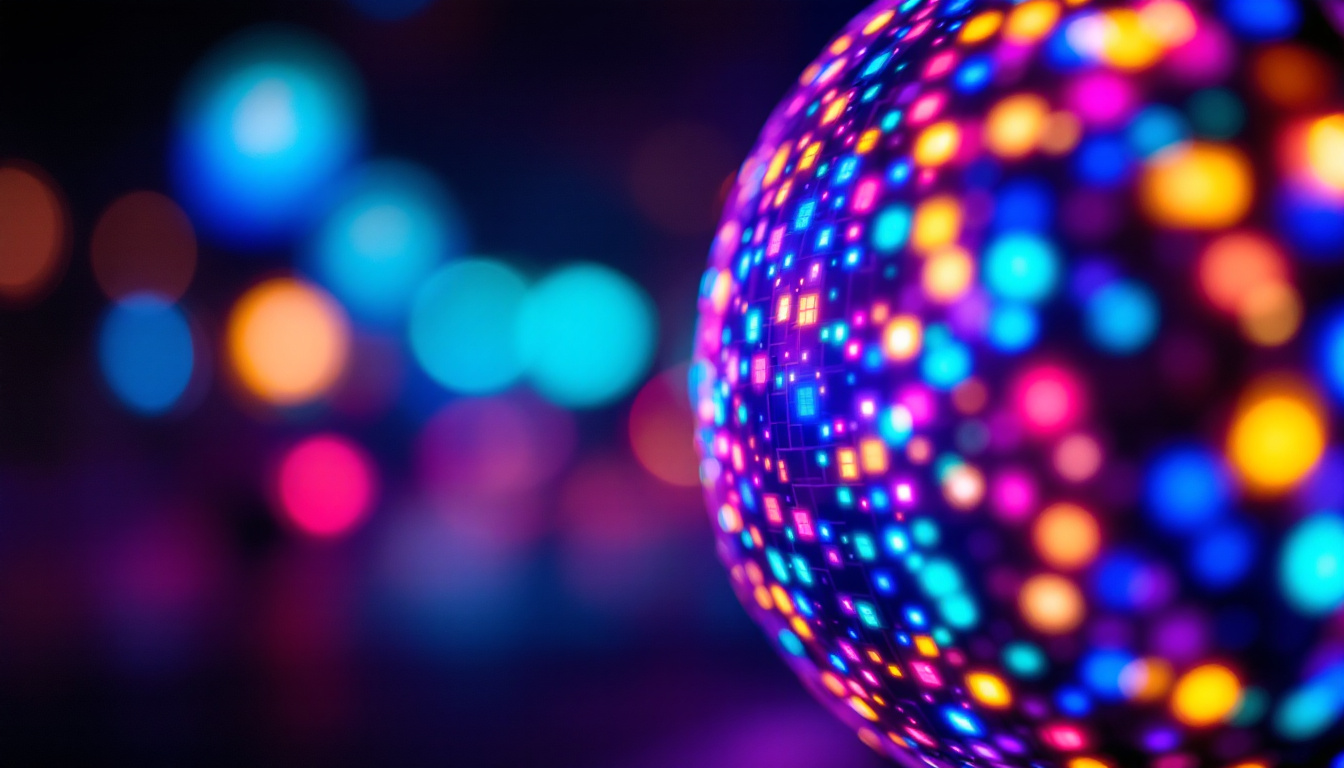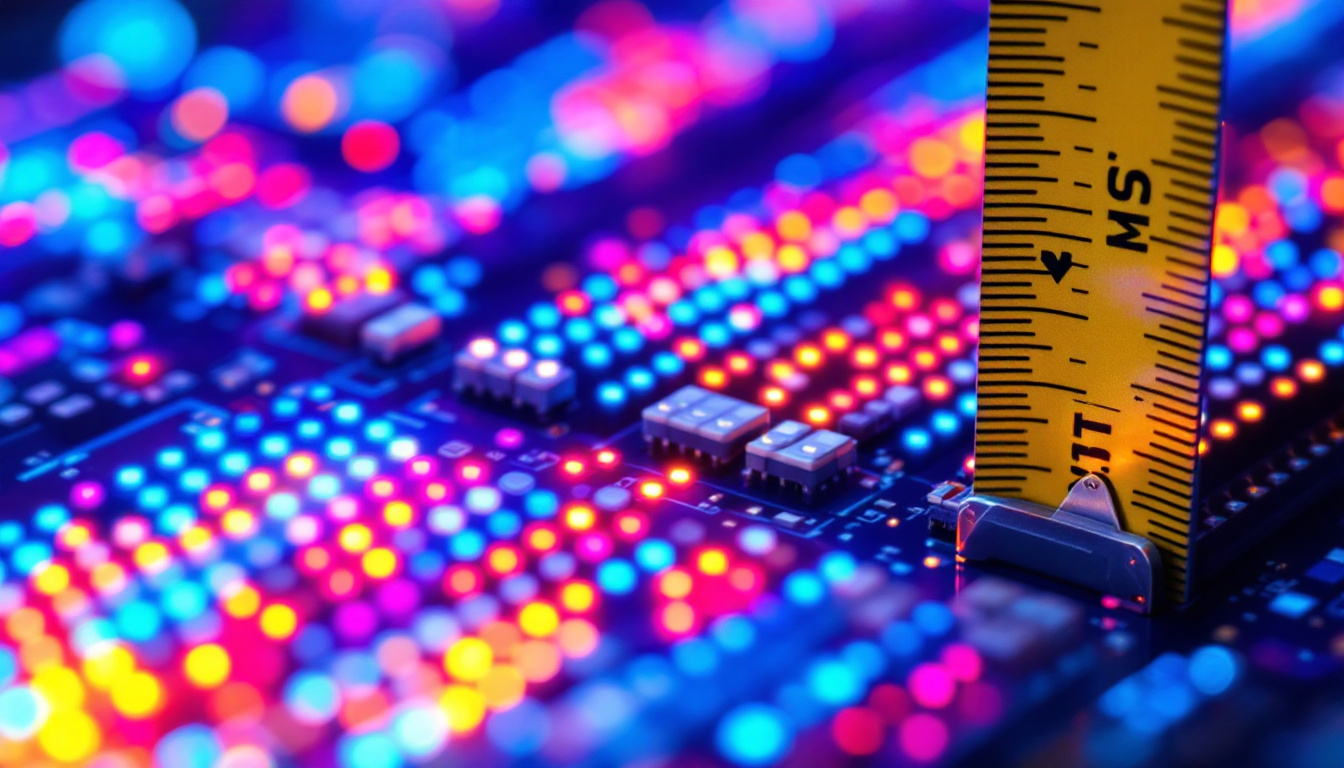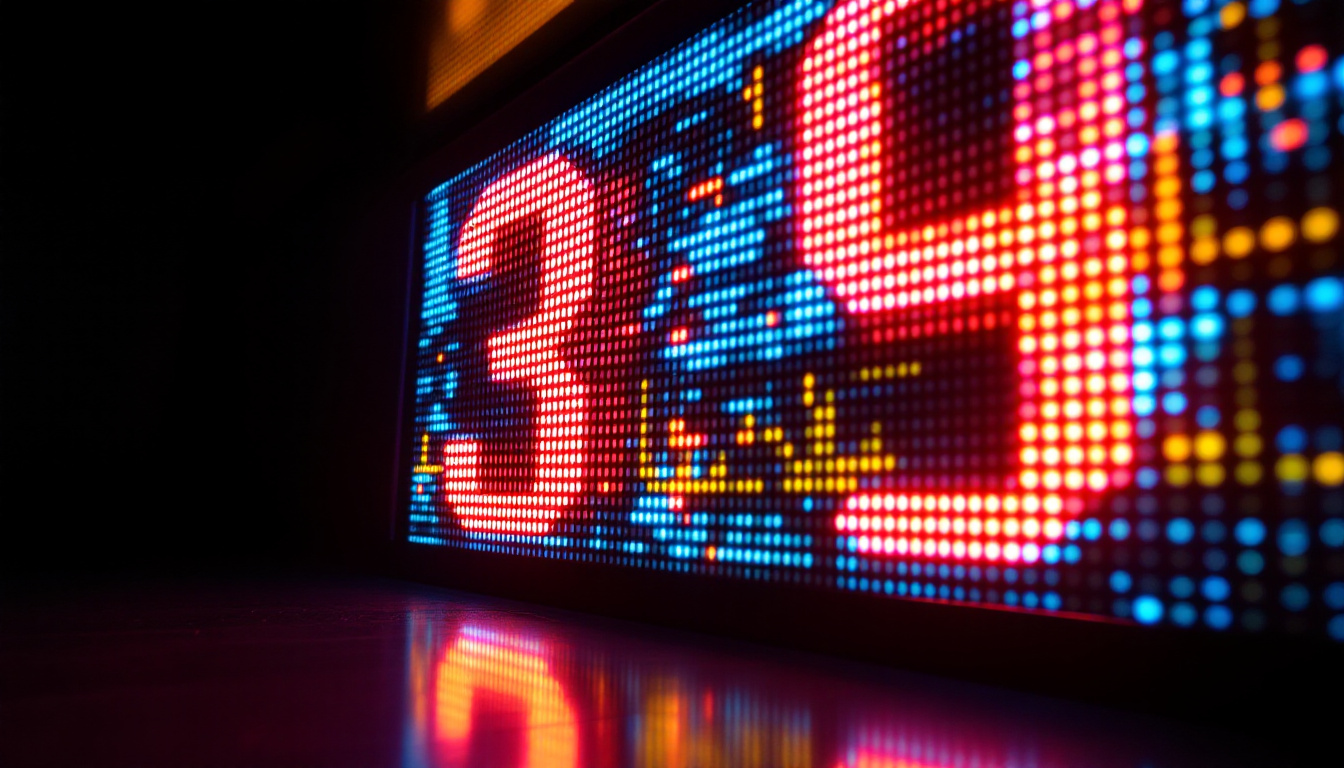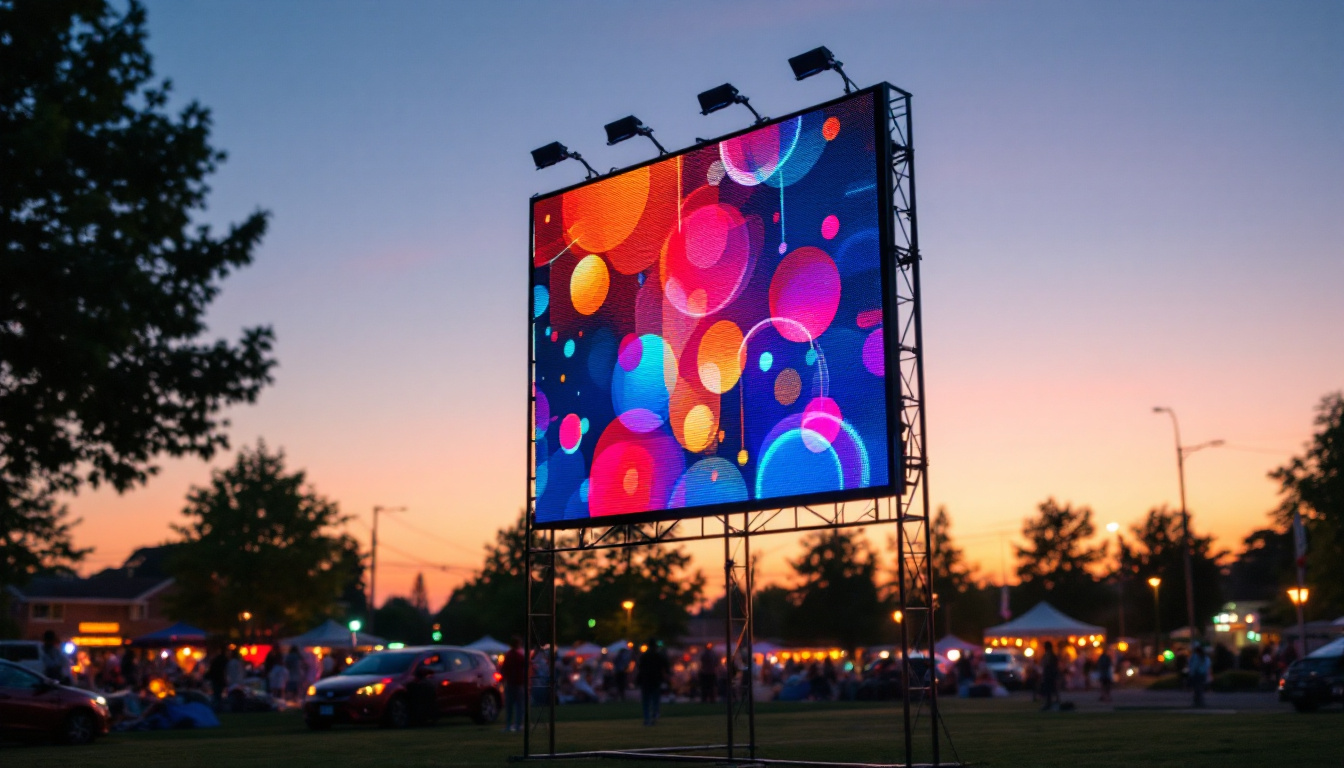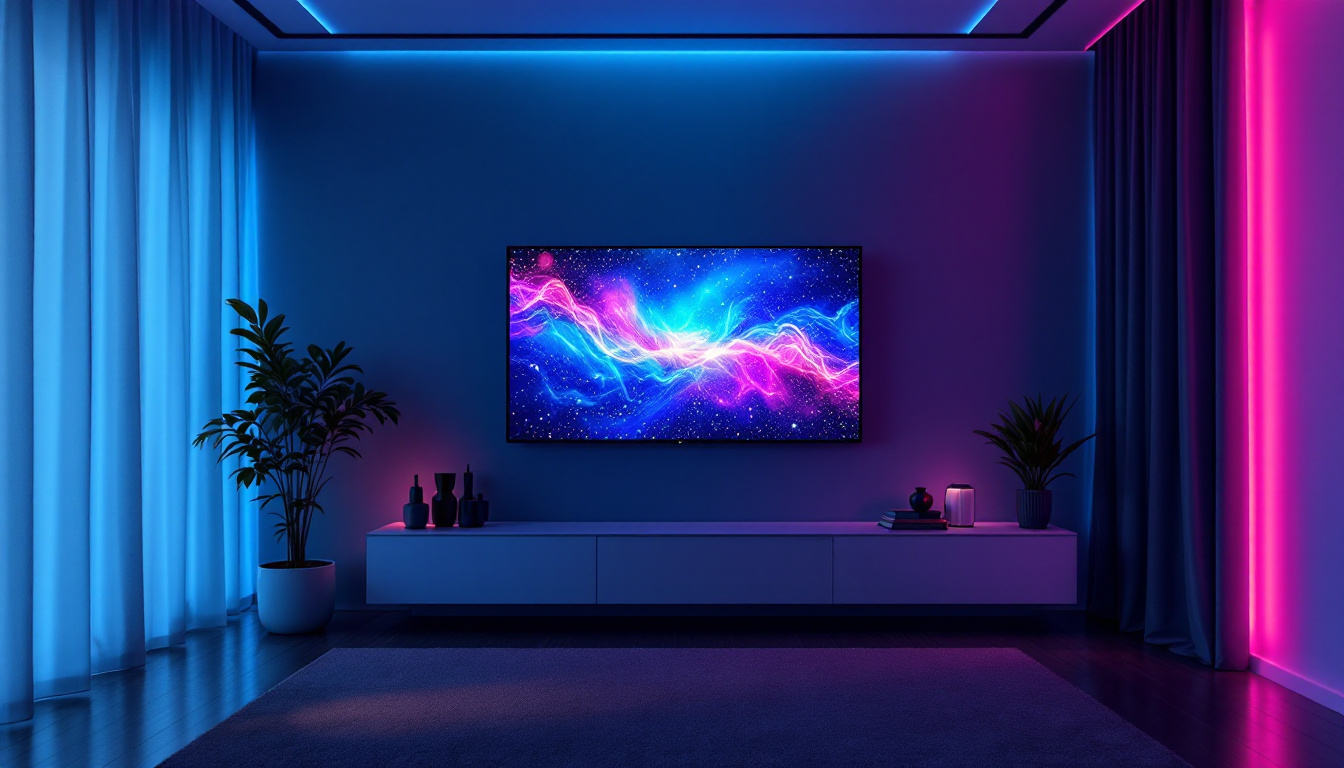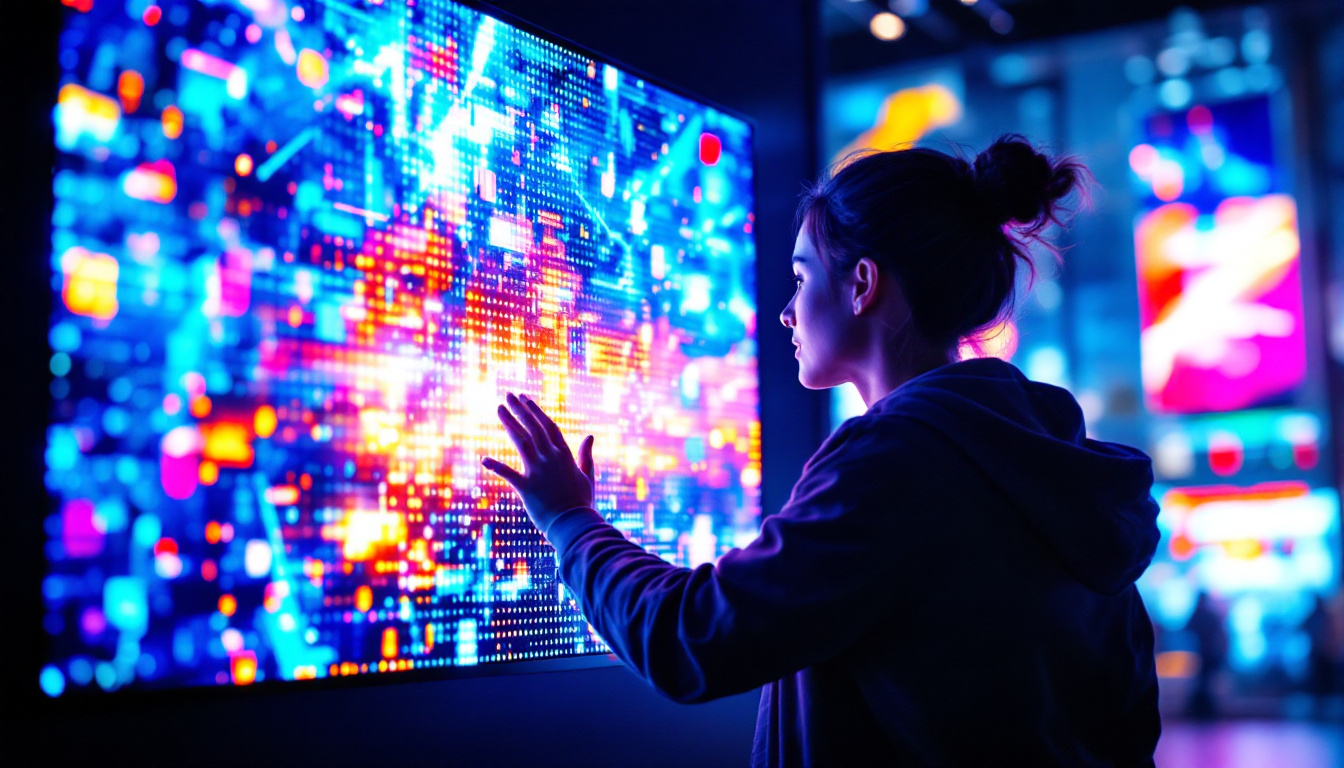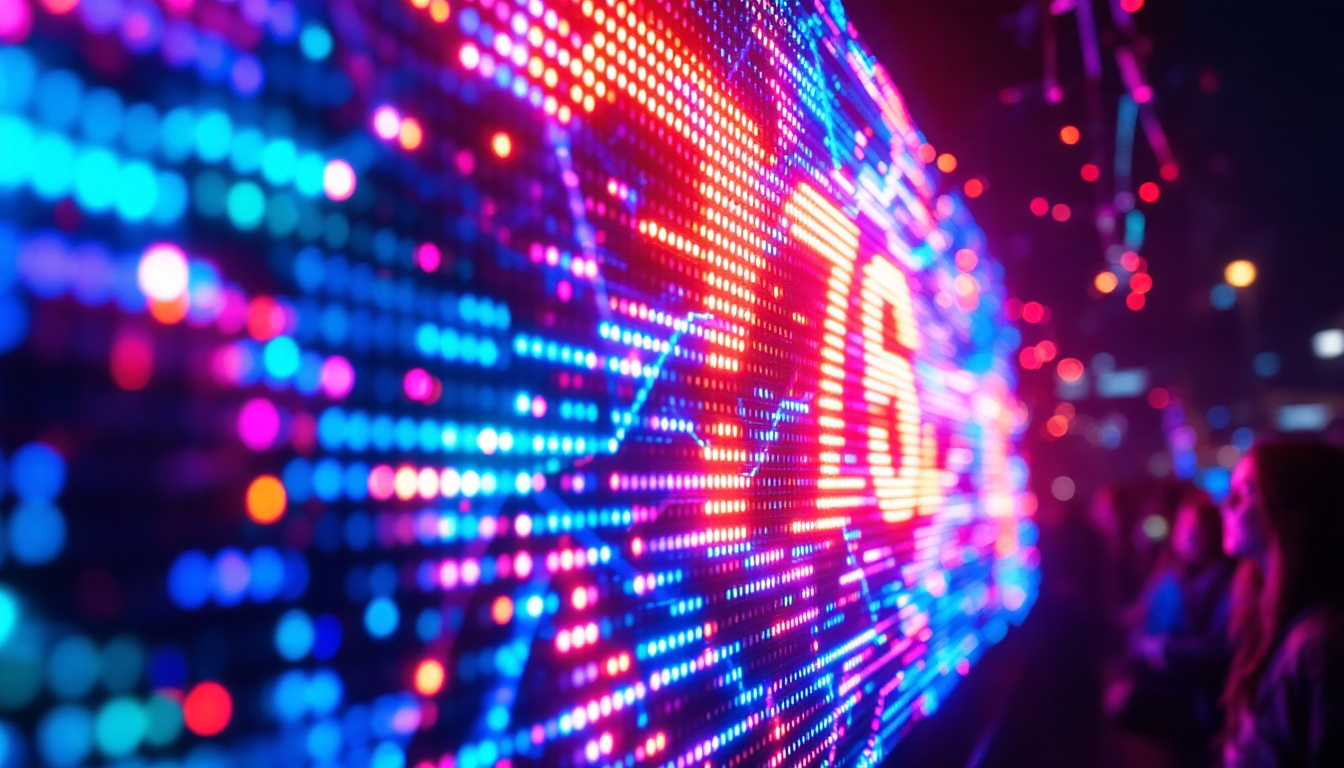In the modern world, LED displays have become ubiquitous, found in everything from smartphones to large outdoor billboards. The technology behind these displays is not only fascinating but also essential for understanding how visual information is conveyed in our daily lives. This article delves into the intricacies of LED display technology, its applications, advantages, and future prospects.
Understanding LED Technology
LED, or Light Emitting Diode, is a semiconductor device that emits light when an electric current passes through it. This technology has revolutionized the way displays are made, offering a range of benefits over traditional display technologies such as LCD and CRT. The energy efficiency of LEDs is one of their most significant advantages, consuming up to 75% less energy than incandescent bulbs and lasting significantly longer, often exceeding 25,000 hours of use. This longevity not only reduces the frequency of replacements but also contributes to lower waste and energy costs, making LEDs a more sustainable choice for both consumers and businesses.
How LEDs Work
At its core, an LED consists of a chip made from a semiconductor material. When voltage is applied, electrons move through the semiconductor, recombining with holes (the absence of electrons) and releasing energy in the form of photons, which we perceive as light. The color of the emitted light depends on the materials used in the semiconductor. For instance, gallium nitride emits blue light, while gallium phosphide can produce green light. This ability to manipulate the semiconductor materials allows for a wide variety of colors and brightness levels, making LEDs versatile for numerous applications.
Different combinations of materials can produce various colors, allowing for full-color displays. By using red, green, and blue (RGB) LEDs, displays can create a wide spectrum of colors through additive color mixing. This technology is not only limited to screens; it is also utilized in decorative lighting, automotive lighting, and even in horticulture, where specific wavelengths can promote plant growth. The ability to control the intensity and color of light emitted by LEDs has opened up new avenues in design and functionality across various industries.
Types of LED Displays
LED displays come in various forms, each suited for specific applications. The most common types include:
- Direct View LED Displays: These are made up of individual LED modules that are directly visible to the viewer. They are often used for large outdoor advertising and scoreboards.
- LED-backlit LCD Displays: These displays use LEDs to illuminate an LCD panel, providing better brightness and contrast compared to traditional CCFL backlighting.
- Organic LED (OLED) Displays: A newer technology where organic compounds emit light, allowing for thinner screens and better color accuracy.
In addition to these common types, there are also specialized LED displays such as MicroLEDs, which consist of tiny, self-emissive LEDs that can create extremely high-resolution images with vibrant colors and deep blacks. MicroLED technology is gaining traction in the market due to its potential for high performance while maintaining energy efficiency. Furthermore, flexible LED displays are emerging, allowing for innovative designs that can bend and conform to various surfaces, expanding the possibilities for creative applications in architecture and product design. As LED technology continues to evolve, we can expect even more advancements that will enhance our visual experiences in everyday life.
Applications of LED Displays
LED displays have found applications across various sectors, each leveraging the technology’s unique advantages. From advertising to healthcare, the versatility of LED displays is remarkable.
Advertising and Marketing
One of the most prominent applications of LED displays is in advertising. Digital billboards and signage utilize LED technology to present dynamic content that can be easily updated. This capability allows businesses to engage customers with real-time promotions, announcements, and interactive content.
The high brightness and contrast of LED displays ensure visibility even in direct sunlight, making them ideal for outdoor advertising. Additionally, their energy efficiency contributes to lower operational costs, making them a preferred choice for advertisers.
Entertainment and Events
In the entertainment industry, LED displays are a staple at concerts, sports events, and festivals. Large LED screens provide audiences with clear visuals, enhancing the overall experience. These displays can be configured in various shapes and sizes, allowing for creative setups that captivate viewers.
Moreover, LED technology enables the use of vibrant colors and high refresh rates, which are crucial for displaying fast-moving images and videos without blurring. This capability is essential for live broadcasts and immersive experiences.
Healthcare and Medical Applications
In healthcare, LED displays are used in various applications, including medical imaging and patient monitoring systems. High-resolution LED screens provide clear images for diagnostic purposes, allowing healthcare professionals to make informed decisions quickly.
Additionally, LED technology is utilized in surgical lighting and examination lamps, providing bright and consistent illumination that is critical during medical procedures. The longevity and reliability of LED lights also contribute to reduced maintenance costs in healthcare settings.
Advantages of LED Displays
The rise of LED displays can be attributed to several advantages they offer over traditional display technologies. Understanding these benefits can help in appreciating why LED technology has become the standard in many applications.
Energy Efficiency
One of the most significant advantages of LED displays is their energy efficiency. LEDs consume less power compared to traditional incandescent or fluorescent lighting, leading to reduced electricity costs. This efficiency is particularly beneficial for large installations, such as outdoor billboards, where energy consumption can significantly impact operational expenses.
Furthermore, the lower heat output of LEDs means that cooling systems are less necessary, further contributing to energy savings. This aspect makes LED displays an environmentally friendly option, aligning with global efforts to reduce carbon footprints.
Longevity and Durability
LED displays are known for their long lifespan, often exceeding 50,000 hours of use. This longevity reduces the need for frequent replacements, making them a cost-effective solution in the long run. The robust nature of LEDs also means they are less susceptible to damage from shocks and vibrations, which is particularly important in outdoor settings.
Additionally, many LED displays are designed to withstand harsh weather conditions, ensuring reliable performance in various environments. This durability is a key factor in their widespread adoption for both indoor and outdoor applications.
High Quality and Versatility
LED displays offer exceptional image quality, with high brightness levels, contrast ratios, and color accuracy. This quality is essential for applications where visual clarity is paramount, such as in advertising and entertainment.
The versatility of LED technology allows for a wide range of display configurations, from large screens to small, intricate designs. This adaptability makes LED displays suitable for various environments, whether it be a corporate boardroom, a retail space, or a stadium.
Challenges and Considerations
Despite the numerous advantages, LED displays also face several challenges that must be considered when implementing this technology. Awareness of these challenges can help in making informed decisions about their use.
Initial Costs
While LED displays offer long-term savings, the initial investment can be significant. The cost of high-quality LED panels and the necessary infrastructure can deter some businesses from making the switch. However, as technology advances and production scales up, prices are gradually decreasing, making LED displays more accessible.
It is essential for businesses to weigh the initial costs against the potential savings in energy and maintenance over time. In many cases, the long-term benefits can justify the upfront expenditure.
Technical Complexity
LED display technology can be complex, requiring specialized knowledge for installation and maintenance. This complexity may necessitate hiring trained professionals, which can add to operational costs. Additionally, ensuring compatibility with existing systems can present challenges, particularly in retrofitting older installations.
Training staff to operate and manage LED displays effectively is also crucial. As the technology evolves, keeping up with the latest advancements and best practices becomes essential for maximizing the potential of LED displays.
Environmental Concerns
While LED displays are generally more environmentally friendly than traditional technologies, they are not without their environmental concerns. The production and disposal of electronic components can contribute to electronic waste, which poses challenges for sustainability.
Efforts are being made to address these issues through recycling programs and the development of more sustainable manufacturing processes. However, consumers and businesses must remain vigilant about the environmental impact of their technology choices.
The Future of LED Displays
The future of LED display technology looks promising, with ongoing advancements and innovations on the horizon. As the demand for high-quality visual experiences continues to grow, so too will the capabilities of LED displays.
Emerging Technologies
One of the most exciting developments in LED technology is the emergence of microLED displays. These displays use microscopic LEDs to create images, offering even higher resolution and improved color accuracy. MicroLED technology has the potential to revolutionize the display industry, providing a more immersive experience for users.
Additionally, advancements in flexible and transparent LED displays are opening new possibilities for design and functionality. These innovations could lead to applications in areas such as architecture, automotive displays, and wearable technology.
Integration with Smart Technologies
As smart technology continues to permeate various aspects of life, the integration of LED displays with smart systems is becoming increasingly common. This integration allows for enhanced interactivity and customization, enabling users to tailor their visual experiences to their preferences.
With the rise of the Internet of Things (IoT), LED displays can be connected to networks, allowing for real-time updates and remote management. This capability is particularly beneficial for businesses looking to streamline operations and improve customer engagement.
Focus on Sustainability
As environmental concerns become more pressing, the display industry is shifting towards more sustainable practices. This shift includes the development of energy-efficient technologies, eco-friendly materials, and recycling initiatives aimed at reducing electronic waste.
Future LED displays are likely to incorporate sustainable design principles, ensuring that they not only meet performance standards but also align with global sustainability goals. This focus on sustainability will be crucial in attracting environmentally conscious consumers and businesses.
Conclusion
LED displays have transformed the way visual information is presented and consumed across various sectors. Their energy efficiency, longevity, and versatility make them an attractive option for businesses and consumers alike. While challenges remain, ongoing advancements in technology and a focus on sustainability are paving the way for a bright future in the world of LED displays.
As the technology continues to evolve, it will be fascinating to see how LED displays shape our interactions with the digital world and enhance our experiences in everyday life. Embracing this technology not only offers immediate benefits but also contributes to a more sustainable and visually engaging future.
Discover the Future of Visual Experience with LumenMatrix
Ready to elevate your visual communication and engage your audience like never before? Explore LumenMatrix’s comprehensive range of LED display solutions, from the vibrant Indoor LED Wall Display to the dynamic Outdoor LED Wall Display, and the innovative Custom LED Display options tailored to your unique needs. With our commitment to cutting-edge technology and sustainability, LumenMatrix is your partner in creating unforgettable visual experiences. Check out LumenMatrix LED Display Solutions today and join the revolution in digital signage and display innovation.

